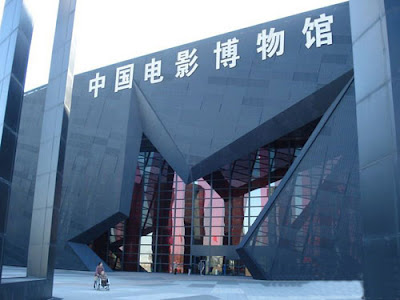Sunday, July 28, 2013
A Guide to Beijing's Free Museums
A museum is the ideal place to get a crash course on a country's history and
culture. Last year, 33 museums in town began offering freeadmission to give the public a better understanding of China's past and present. Most of the museums are located in the suburbs or attached to another tourist site.
China National Film Museum
This museum, opened in 2005 to celebrate the centennial of Chinese cinema, is the world's largest film museum. Movie aficionados will go gaga over its gigantic movie collecton.
The building's design, by US-based RTKL International and Beijing Construction Design Institution, reflects the concept of finding a balance between film and architecture. The grand exterior features an image of a gant screen and a series of slanted structures resembling a film clipboard.
The interior of the four-story museum is divided into four halls colored red, green, blue and yellow.
The exhibition area covers the second and third floors and has 10 halls. Through multimedia presentations of Chinese films, visitors can follow the development of the local movie industry.
Five halls on the second floor focus on the history of Chinese cinema, from birth in 1905 of its first film Dingjunshan, or Conquering the Jun Mountain, to million-yuan modern blockbusters. The achievements of certain Chinese filmmakers are also documented.
On the third floor, another five halls show different types of films: animated, children's, science and educational, news and documentaries, even foreign films. They also introduce movies from HongKong, Macau and Taiwan.
The expo area on the top floor encompasses 10 halls, which focus on demystifying filmmaking. The exhibits present the various aspects of filmmaking: shooting, editing, musical scoring, special effects and developing.
Visitors are offered an interactive experience that allows them to make their own short films and record sounds. They can try their hand at dubbing and editing, and learn the secrets of the trade like reverse-action filming and rear-screen projection. People who can only spare one day at the museum should head straight to the expo area.
Scattered throughout the museum's 20 exhibition halls are dioramas that tell the story of Chinese cinema. Old quipment like spotlights and lenses are also on display.
There is a small snack shop in the building for visitors who want refreshments. There is also a cafe for those who want to sit down and catch their breath. Customers can use the cafe's Internet connection to surf the Web for free.
The museum has theaters that showcase movies in various formats: IMAX, digital and 35mm film. IMAX, also called the "giant screen," is one of the most advanc cinema systems. It has a powerful multiple sound track system, including surround sound.
Subscribe to:
Post Comments (Atom)

No comments:
Post a Comment